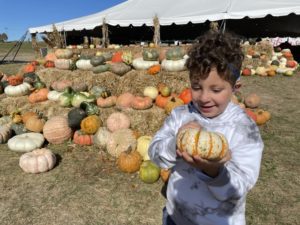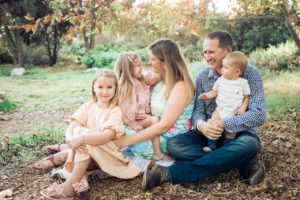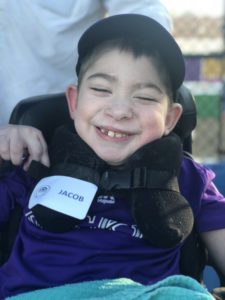If your child was sick and there was a real, viable treatment option, the next step seems pretty straightforward: pursuing that option. But what if it wasn’t that easy? What if the treatments were experimental and access was limited? More so, what if the FDA had the power to approve these treatments and get them into your hands — but chose not to? For many families whose children have Niemann-Pick disease Type C (NPC), these questions are not just hypotheticals, but the reality.
“Save Our Medicine” was created through a desire to protect the two experimental medicines which are making a difference in the lives of children with NPC. As a campaign from the NPC community, led by Hope for Marian Foundation, “Save Our Medicine” is asking the FDA to please protect and ensure access to the experimental medications needed to save lives.
Recently, I sat down with mothers DeAnna, Sara, and Tiffany to talk about their experiences with NPC, increasing NPC education and awareness, and why the fight to save medication access is so important. So read on to learn more about Save Our Medicine and how you can use your voice to help in this 3-part series.
Niemann-Pick Disease type C (NPC)
Niemann-Pick disease consists of a group of rare, fatal, and inherited metabolic conditions. There are three subtypes of Niemann-Pick disease, known as types A, B, and C. SMPD1 gene mutations are associated with the first two types, while NPC1 or NPC2 gene mutations cause NPC. Regardless of subtype, the gene mutations prevent cells from metabolizing lipids (fats) and cholesterol. As these lipids and cholesterol accumulate, it causes the cells to die.
This lysosomal storage disorder can affect multiple organs and affect people of varying ages. While some NPC diagnoses are late-onset, others are perinatal or early infantile. Late-onset patients may present with neurological symptoms which mimic schizoaffective disorder or bipolar disorder. In younger patients, symptoms can include:
- Jaundice (yellowing of the skin, eyes, and mucous membranes)
- Enlarged spleen and/or liver
- Difficulty swallowing
- Fetal ascites (abnormal fluid accumulation in the abdomen)
- Cholestasis (abnormal bile flow)
- Failure to thrive
- Hypotonia (low muscle tone)
- Eye paralysis when trying to move the eyes vertically
- Hearing loss
- Clumsiness
- Slurred speech
- Memory loss and/or dementia
Unfortunately, NPC is a fatal disease, whether early in life or after an extended period of time. However, experimental treatments have been shown to slow disease progression and improve quality of life. No FDA-approved treatments exist.
The Diagnostic Process
DeAnna
When DeAnna’s son Osama was born five years ago, she was so excited to begin her family. However, his birth was also marked by a myriad of difficulties; Osama was born two months early and presented with a variety of concerning symptoms, such as an enlarged liver and spleen, as well as fetal ascites. As described above, these tend to be more common symptoms associated with NPC.

For about 14 months, DeAnna’s doctors ran various tests on Osama to better understand his symptoms and what could be causing them. With little to go on, the family finally got approval for genetic testing. DeAnna explains:
He had started to regress and was no longer able to hold his body up. It took about eight weeks to do genetic testing and get the panel back, which is when we got the diagnosis. Diagnosis day is like D day.
It took us a few weeks, but we put our emotions to the side and decided that we were going to do whatever was best for him and enjoy life with him.

This included connecting with other families touched by NPC, speaking to professionals like Dr. Kravis and Dr. Patterson, and learning more about potential treatment options. During this time, DeAnna posted on an online board asking about family planning after an NPC diagnosis. Through this, she came in contact with Sara, explaining:
Sara really helped give us the push even when it felt scary. Now, Osama has been on adrabetadex for almost four years.
Sara
Sara is the advocacy group.
Sara’s daughter Marian is now 6 years old. Sara describes her diagnostic journey as being slightly different than DeAnna’s, as Marian was not placed in the NICU. That being said, Sara does believe that a different doctor or situation could have helped her daughter:
If she had another set of eyes on her, she would’ve been flagged for some concerning things. Because I had another healthy baby, my doctor kept telling me that Marian would be fine. She’s just small, she has prolonged jaundice, but she’ll be fine.
But once Sara took Marian home from the hospital, she noticed some more concerning symptoms. Marian had low muscle tone with little fat. Sara describes her arms as:
Thin, like spaghetti noodles.
Marian was weak and sleepy and had difficulty sitting up. She began getting sick all of the time and struggled with swallowing, often choking while feeding. At 9 months old, Sara brought Marian to the neurologist. It took 9 more months, and 4-5 different neurologists, before Marian underwent whole exome sequencing at 18 months old.
While the diagnosis was shocking, Sara had done her research. At one point during this entire process, her doctor had mentioned that Marian could have some sort of lysosomal storage disorder. Digging into research, with her trusty sidekick Google, Sara says NPC was the only condition that felt like it matched Marian’s symptoms. She read about cyclodextrin on the Fight NPC website, saying:
It helped me keep going at the time. I kept thinking, okay, at least there’s something we could do. You look at your baby and it’s your baby; they look good even though they’re struggling. You can’t even imagine having to watch them suffer and disappear.

Luckily, Sara had the assistance of some very engaged and committed doctors at Children’s Hospital Los Angeles who said that they would help her fight. That if she could find an experimental program, a clinical trial, or compassionate use programs, that her doctors would be behind her every step of the way. She chuckles as she says:
You don’t really want to be your doctor’s top priority, but we had a lot of that going at the time.

Tiffany
“I kind of feel like the medical field in Las Vegas isn’t as great,” Tiffany shares. Her diagnostic journey differs greatly from Deanna and Sara’s, especially in her treatment from physicians. Her son Jacob passed away at age 7, just a few months shy of his 8th birthday. She explains:
My Jacob didn’t show symptoms at first. He was slower, but he was my first baby, so I thought maybe I was thinking about it too much. But at 2-3 years old, he was just falling down all of the time. He was delayed and just behind. I thought, there’s something not right here.
To try and address the situation, Tiffany took Jacob to a neurologist, who followed his progress but seemed not to think much of it. Her doctors kept telling her that Jacob was just a boy; they sometimes progressed slower. He would come around eventually. Eventually, says Tiffany:
The doctor just told me, ‘Oh, he’s just mentally retarded.’ He said, ‘Why would anybody care about your disease? It only affects so little people in the population of the world.’ So when Jacob started having seizures, I refused to see the first neurologist. I sat in the waiting room for 5 hours once until they would let me see a new doctor. My whole NPC experience was me constantly fighting and being the advocate for my kid because nobody really cared.
Later, doctors wanted to test Jacob for muscular dystrophy and take biopsies. It wasn’t until a woman from church approached Tiffany that she was finally set on a promising path. The woman shared that she knew a family in Arizona whose son had similar symptoms. After talking to the woman on the phone, Tiffany had a potential idea: a lysosomal storage disorder.

Learn more about Save Our Medicine and the three families above in the upcoming Part 2 and Part 3.


